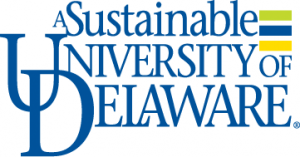Delaware Environmental Institute
Category: News
Brandywine Creek dam-removal project aiming to start work this year
Brandywine Shad 2020, a nonprofit led by the Brandywine Conservancy, the Hagley Museum & Library, and the University of Delaware, is hoping after three years of preparation to begin removing dams this year, or to modify them in ways that allow the fish to swim upstream through about 23 miles of the creek.
Read moreNew funding to study microplastic pollution effect on Delaware Bay Blue crabs
Through its marine debris program, the National Oceanic and Atmospheric Administration is giving the university a $325,000 grant to study the impact of microplastics on blue crab populations near the Delaware Bay.
Read moreWATER, WATER EVERYWHERE: A multidisciplinary look at policy
Reducing contaminants means more fish in Delaware’s Christina River are safe to eat. Managing the water flow in Galveston Bay allows oysters to thrive. And around the world, reducing conflicts over water and other natural resources helps to promote pea
Read moreTRACE ELEMENTS: Don Sparks honored as pioneer in environmental science at trace elements gathering
n the city of Nanjing, an ancient capital of China, scientists from across the globe gathered to discuss state-of-the-art research at the 15th International Conference on the Biogeochemistry of Trace Elements. Essential for human nutrition, these elements — like arsenic and chromium — can have toxic effects depending on the concentrations. The University of Delaware’s Don Sparks was there to help make sense of the science, at least as it pertained to soil, and to be honored for his decades of research and scholarship, teaching and mentoring.
Read moreREDESIGNING LAUREL: UD’s Lewandowski, Bruck team up with Laurel Redevelopment Corporation to revitalize town
In the town of Laurel in Western Sussex County, what started as combating water pollutants has become a full-scale downtown redevelopment project. As the town worked with UD on the environmental effort, the community realized that its waterway was its most valuable asset.
Read moreOne hundred feet below the surface, bioluminescence is the dominant light source during the polar night
A new study published today in Scientific Reports by University of Delaware researchers and colleagues reveals that 100 feet below the surface of the ocean is a critical depth for ecological activity in the Arctic polar night — a period of near continu
Read moreUnderstanding weather and climate through the droplets known as ocean spray
If you’ve ever been to the beach, it’s likely that you have observed the foamy whitecaps that form as waves break along the shore or out at sea. For many, it’s a photo-worthy moment, but what most people don’t know is that the droplets contained in the
Read moreDNREC offers community engagement internship in conjunction with Delaware Environmental Institute
Students who are interested in making sound environmental policy have an opportunity to gain direct experience this winter and spring through a paid internship with the Delaware Department of Natural Resources and Environmental Control (DNREC). Each ye
Read more

